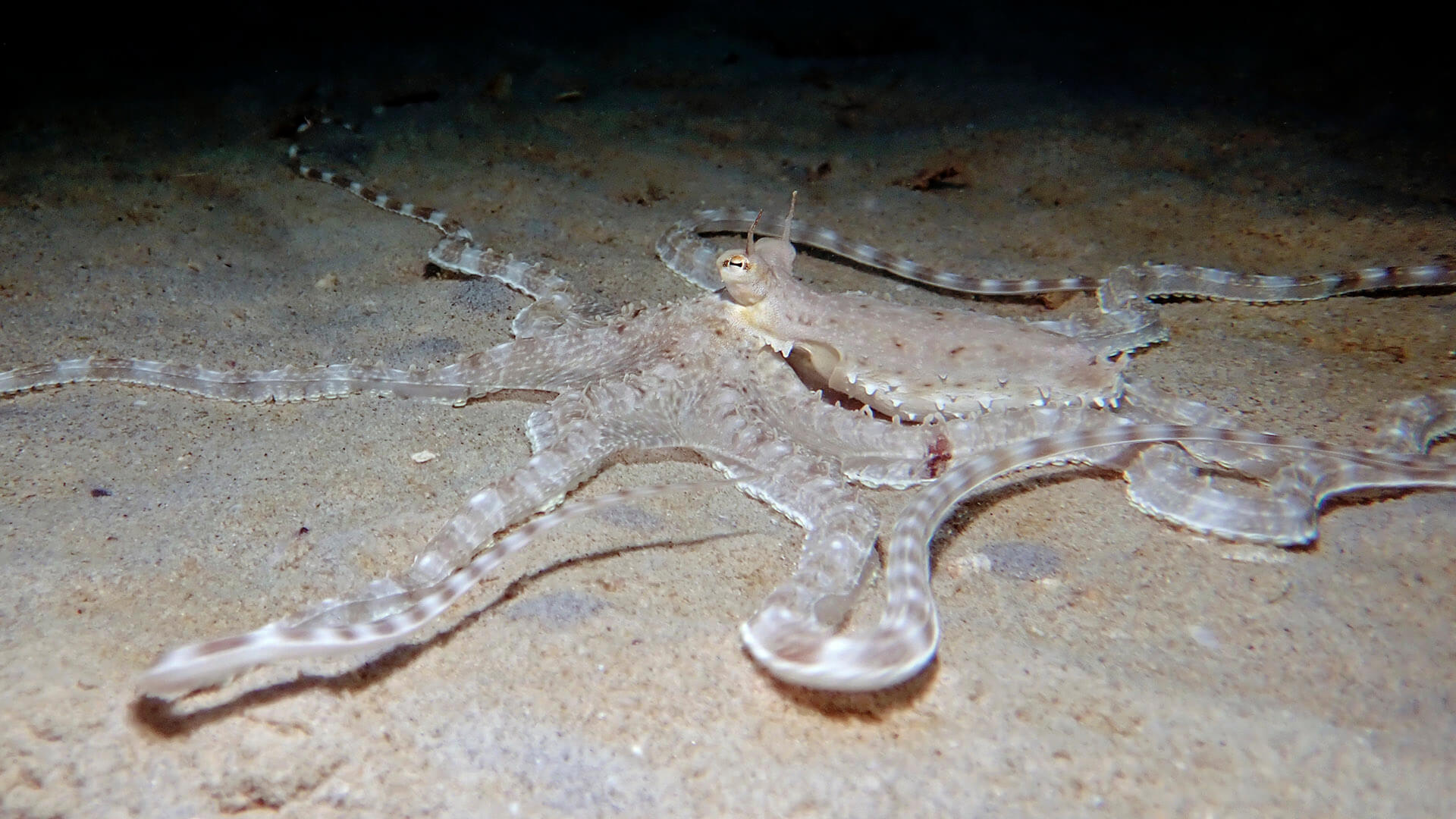


The bright pattern may be a warning that the octopus isn't tasty, though it's not been confirmed that it's unpalatable to fish or anyone else. The mimic octopus wasn't discovered until 1998, so scientists are still learning basic characteristics. That coloring may not all be mimicry, though. The conspicuous body patterning came later. The brown-and-white stripes on its arms resemble the patterning on venomous sea snakes and the coloring. They found that the octopus began to swim like a flatfish around the same time that it evolved very long arms. The mimic octopus ( Thaumoctopus mimicus) has some interesting ways to keep from being eaten.
#Mimic octopus skin
In a new study in the Biological Journal of the Linnean Society, biologists examined DNA sequences of the mimic octopus and 35 of its relatives to create a family tree and determine when each of the mimic's distinctive traits evolved. Octopuses are normally masters of camouflage, changing the colour of their skin through chromatophores, the pigmentcontaining and light-reflecting cells found in amphibians, fish, reptiles, crustaceans, and octopuses. Scientists believe that it can mimic up to 15 other different types of marine species. With the ability to change its color, texture, and behavior, it mimics whatever life forms are in its current environment. Any live foods should be fed spirulina based dry foods, plankton, and cyclops to enhance their nutritional value. The mimic octopus is the chameleon of the sea. The Mimic Octopus can be fed small live feeder shrimp or freshwater ghost shrimp. Mimic octopuses have been observed shifting between impersonations as it crosses the ocean floor to return to its burrow. The hovering blue ringed octopus Such a wonderful and beautiful marine life, yet it is deadly with its venomous bite. This rare cephalopod often mimics the shape and behavior of other marine species. These aren't perfect impersonations, but they may startle a predator enough that the octopus has time to flee. The mimic octopus is one of the smartest and most adaptable creatures in the ocean. Mimic octopuses reach about 60 cm in length and are typically brown and white striped. A Mimic octopus, Thaumoctopus mimicus, is found on the black sand seafloor in Lembeh Strait, Indonesia. For example, when the octopus swims, it can arrange all of its long arms behind its body and impersonate a toxic flatfish, such as a zebra sole. And it can vary its shape and positioning to look like a variety of different underwater creatures. The brown-and-white stripes on its arms resemble the patterning on venomous sea snakes and the coloring of spiny lionfish. The mimic octopus ( Thaumoctopus mimicus) has some interesting ways to keep from being eaten. SIZE OF THE MIMIC OCTOPUS This is a moderate-sized species with a mantle length to 58 mm (2 in), and total length to over 480 mm (19 in).


 0 kommentar(er)
0 kommentar(er)
